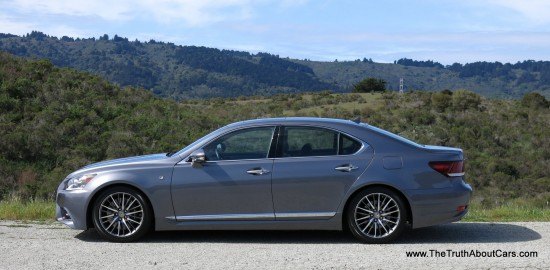#LS460
Ask Jack: The Man Who Flexes From WRXes To Lexus?
I’ve said it before and I’ll say it again: everything, and I mean everything, is utterly and absolutely context-dependent. It’s literally true on the atomic level, where we cannot accurately measure both position and velocity at the same time. It’s true at the quantum level, where “quantum entanglement” governs behavior that is currently beyond our ability to understand. It’s even applicable in your dating life; the same size-six girl who feels insubstantial to you in the long evenings at home will acquire new heft after you spend a drunken weekend away with a size two.
Since this is an automotive website and not The Journal Of Theoretical Physics And Deniable Adultery, let’s focus on what context means in the automotive sense. The definitions of fast car, big car, economical car, reliable car, and even full-sized pickup have all changed several times since the end of the First World War. Imagine you fell into a coma in 1975 and woke up today; you’d probably ask how and why cars got so tiny and trucks got so big. The first 911 Turbo was a “widowmaker” with 260 horsepower; today’s model delivers twice that much power and still isn’t the fastest car (around a track, at least) in its price range.
More importantly, our own personal context for an automobile often determines how much we enjoy and appreciate it. Think of all the people who spend their weekends restoring, cleaning and driving “classic cars” that other people threw away decades ago. Think of the over one million people who couldn’t wait to trade their Tri-Five Chevys in on something new, and of all the people who’ve spent major portions of their lives making those same cars better than they were when they left the assembly line. That’s the power of context.
Which brings me to today’s question for Ask Jack. It’s all about one man’s very unusual, but entirely understandable, definitions of “daily driver” and “weekend special”.
Review: 2013 Lexus LS 460 F-Sport (Video)
While BMW has been turning the 7-Series into a luxuriously silent highway cruiser, Lexus has been busy injecting sport into their isolated lineup. In 2006 we got the 417HP IS-F, in 2011 came the insane LF-A super car, and in 2012 we were introduced to Lexus’ styling and suspension tweak brand F-Sport with the GS350 F-Sport. It was only a matter of time until the spindle grille and the looks-fast F package appeared on Lexus’s flagship LS. Can a “looks-fast” and “handles-better” package help the LS regain the sales crown? Or does Lexus need to go back to the drawing board for some go-fast love?
Pre Production Review: 2013 Lexus LS 460 and LS 600hL
The LS and I have had a long relationship. Back in 1993 I was an impressionable teenager nearing that holy-grail of ages: 16. This meant I dreamt of driving constantly. My parents were Oldsmobile and Chrysler folks, so my choices were a 1980 Custom Cruiser, a 1985 Cutlass Ciera, or a 1988 Grand Voyager. The Oldsmobiles were diesel. Need I say more? One day my best friend’s dad pulled up in a brand-new 1993 Lexus LS 400 for the school run. I had no idea cars could be assembled with that kind of precision and my world was changed forever. Needless to say, when the Lexus invited me to the unveiling of the fifth-generation LS, my expectations were set high.
Review: 2012 Hyundai Genesis 5.0 R-Spec Take Two
The Japanese are always worried about what the North Koreans have up their sleeve, but if the writing on the wall were legible, they would be more concerned about what’s going on in the south. If the 2009 Hyundai Genesis was a shot across the bow of Lexus and Infiniti, then the Genesis 5.0 R-spec may be a torpedo hit below the water, and speaking of which, even the Germans should take notice. Of course, we heard this before with the likes of the VW Phaeton, however that model tanked, so is the top-line Genesis biting off more than it can chew? Lets find out.
















Recent Comments